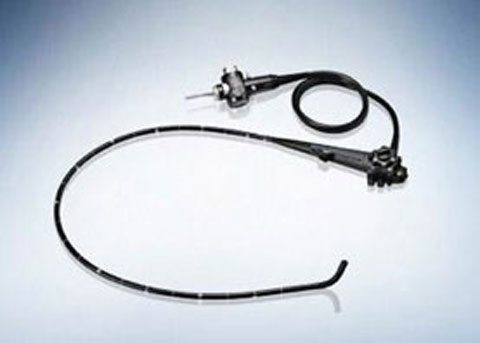The maker of the duodenoscope blamed for the superbug infection outbreak at UCLA releases a new, validated reprocessing protocol for the device.
March 26, 2015

Marie Thibault
Olympus America Inc. today released its new, validated reprocessing procedures for its TJF-Q180V duodenoscope. The higher-level disinfection instructions are meant to address the fact that the duodenoscopes were found to still be contaminated with an antibiotic-resistant bacteria despite proper reprocessing.
FDA has urged facilities using the Olympus device to train its reprocessing staff and start using the new protocol as soon as possible.
Dozen of cases of carbapenem-resistant enterobacteriaceae (CRE) infections at hospitals around the country have been linked to duodenoscopes, a type of endoscope used to diagnose and treat diseases of the liver, bile duct, and pancreas. The Olympus duodenoscope has been blamed for patient deaths and infections at Los Angeles’s Ronald Reagan UCLA Medical Center.
FDA previously issued a safety communication pointing out that duodenoscopes can be difficult to sterilize completely because small space around its “elevator” mechanism can be hard to brush or clean perfectly. Olympus’s more rigorous protocol includes additional steps to raise, flush, brush, and disinfect the forceps elevator recess area during precleaning, manual cleaning, and manual high level disinfection.
FDA recently released its final guidance on medical device reprocessing, giving manufacturers guidelines for cleaning, disinfecting, and sterilizing reusable devices—including duodenoscopes—that are reprocessed in the health care setting. This validated protocol may help alleviate some concern, since a patient advocate recently told MD+DI that the lack of a validated reprocessing protocol was one weakness of FDA’s finalized guidance.
FDA previously revealed that this Olympus duodenoscope model never received FDA approval because the maker initially believed agency review was not required. The company submitted a 510(k) after FDA requested it; that submission is still under review.
Today’s FDA safety communication sheds more light on the timeline, noting that Olympus began validation testing of new reprocessing instructions for the device in September 2014. After the company submitted validation reports to FDA in October 2014, the agency determined they did not show “an adequate safety margin.” FDA reviewed new validation data that Olympus submitted in February 2015 and found the new reprocessing protocol to be “robust.”Validation requires a 99.9999% reduction in microbes.
The new validated protocol steps are reproduced below; more details can be found in the company’s letter to customers. Olympus notes that the precleaning and manual high level disinfection procedures can be put into practice right away, while the manual cleaning steps require a new brush. Olympus has promised the new brush will be shipped by May 8.
Precleaning:
During immersion, raise and lower the elevator three times
Manual Cleaning:
Additional brushing of the forceps elevator recess area—The revised cleaning procedure requires brushing of the forceps elevator recess with two different-sized brushes. In addition to the brush that is currently used to clean the elevator recess area, the MAJ-1888 brush (or MAJ-1888 equivalent) will be provided for further cleaning of this area. Olympus anticipates shipping the MAJ-1888 brushes to facilities no later than May 8, 2015.
Additional flushing of forceps elevator recess area
Additional raising/lowering the forceps elevator
Manual High Level Disinfection:
Additional manual flushing steps and increased flushing volume of each endoscope channel, as well as the elevator recess area
Additional raising/lowering the forceps elevator
Stay on top of the latest trends in medtech by attending the MD&M East Conference, June 9–11, 2015, in New York City. |
Marie Thibault is the associate editor at MD+DI. Reach her at [email protected] and on Twitter @medtechmarie
[Image courtesy of Olympus America Inc.]
About the Author(s)
You May Also Like


